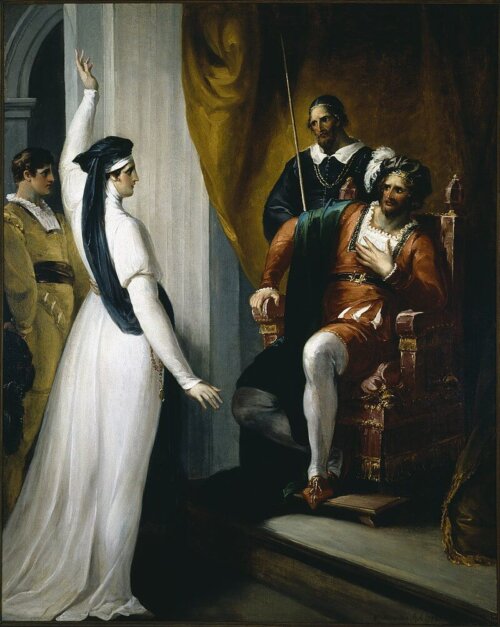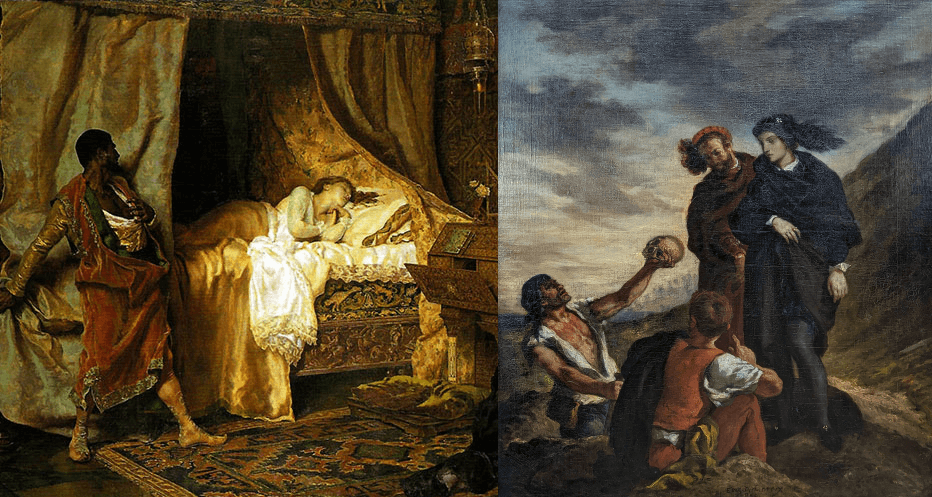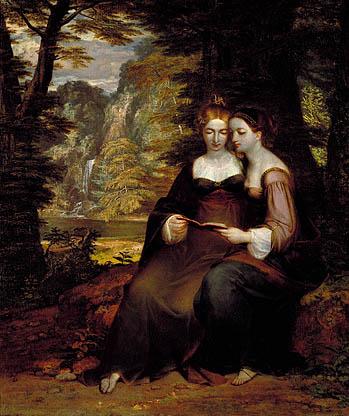Spiritual Renewal and Modern Choral Music

One of the most interesting phenomena in modern “classical” music (or, if you will, “serious” or “art” music) from the end of the 20th century to today has been a marked revival of the composition of choral works of an explicitly spiritual and religious character. A very interesting story lies behind this development, one that I believe connects with broader cultural and civilizational themes. While the history of classical music in the 20th century is complex and many-sided, part of it could be characterized as a pursuit of technical complexity for its own sake. This is seen especially in the legacy of 12-tone (or serial) music, introduced by Arnold Schoenberg. For many of this school, the art of music seemed to have become nothing more than a mathematical mind game, with no regard for expressive, emotional, or spiritual values that the art could communicate. As the music of the extreme modernists became more and more complex, dissonant, and hard-to-follow, audiences gradually began to tune out to contemporary fare entirely—this despite the fact that there were a great many composers throughout the 20th century—the majority, in fact—whose work retained a connection to traditional aesthetic values.
The heyday of extreme-modern music has been variously dated by different authors, but it seems to have happened sometime between the mid-1950s to the late 1970s, especially as it became deeply entrenched in academia. More traditionally-minded composers certainly continued to write music during those years, but their music was increasingly marginalized by the modern-music establishment as old-fashioned and obsolete. It really was a question just then whether modern music (as opposed to the established “classics” from Palestrina through the early 20th century) would continue to have any relevance for the general listening public at all.
Gradually, from the 1970s onward, an inevitable reaction to extreme modernism took shape on the part of composers and audiences. One strain in this development was the emergence of a group of composers writing music of a markedly spiritual, religious, or mystical nature, returning to an often-simple tonality or modality reminiscent of medieval music or chant. “Spiritual minimalism” and “holy minimalism” are among the labels that have been applied to this group of musicians that include the Estonian Arvo Pärt, the Latvian Pēteris Vasks, the Englishman John Tavener, and the Polish Henryk Górecki, among others. Through the reach of recordings and marketing, these composers’ work found a welcome response among large numbers of listeners.
Some commentators have related this phenomenon to a larger search for spirituality among late-20th-century people as a reaction to the dispiriting elements of contemporary life. A good portion of this music, in fact, was vocal or choral and set to religious texts, and the composers themselves have been strong Christian believers. Without a doubt, their use of very simple musical elements and their fostering of a sense of meditative timelessness in their works were welcomed as an antidote to the busyness and overcomplexity not just of modern music but of modern life itself. It is not accidental that some of these composers (Pärt and Vasks, to name two) came from countries marked by repression and persecution; faith was for them a deep sustenance, and their music was a form of quiet protest. People in the free world, meanwhile, found great meaning in their moral and aesthetic convictions as expressed in their music.
The value and merit of this body of work will of course be up to the judgment of individual listeners and critics. It would be wrong, I think, to embrace this music unquestioningly simply because it embodies or claims to embody spiritual content. Art must ultimately be judged as art; that is to say that art should remain itself and should not be mistaken for moral instruction or anything else, although it can of course embody those things as part of its message. Here I would like to take a brief look at two composers associated with this modern musical phenomenon and compare and contrast them. The Estonian composer Arvo Pärt (b. 1935) has been well known since at least the 1980s, when recordings of his music began selling widely and finding great popularity. An essay by Robert Reilly published in The Imaginative Conservative some years ago gives a good account of Pärt’s story: his early embrace of serialism, his abandonment of this style after time spent in a monastery studying medieval and Renaissance music, and his subsequent emergence as a composer who builds his works out of simple and minimal materials, evoking stillness, contemplation, and space, often using religious texts—a decision that got him in deep trouble with the communist authorities and occasioned his move to Western Europe. (Read Mr. Reilly’s essay as well for a differing opinion of Pärt’s music.) As is well known, Pärt composes his music according to a method which he invented and calls tintinnabuli. It is a style based on the ringing resonance of the simple triad, the basic building block of tonal music since the Renaissance. In technical terms, one voice (or instrument) sounds a smooth, stepwise chantlike progression of melody while at the same time other voices (or instruments) sound notes from the main triad. The result is similar to the ringing of bells and can be quite rapt and hypnotic.
There is, at the same time, a severity and bleakness in Pärt’s work; where some find his music consoling and haunting, it often comes across to me as barrenly minimalistic and overly repetitive. The core problem I have with Mr. Pärt’s style is that it seems to reject so much of what makes the Western musical tradition unique: drama, narrative drive, richness. Tintinnabuli can produce beautiful effects, but to make it one’s constant method seems to me to put on a technical straitjacket not unlike serialism. Although I value simplicity, I do not agree with John Tavener that complexity as such is evil. It’s also possible that Pärt’s music relates to a kind of Eastern Christian spirituality with which I as a Westerner and a Roman Catholic am not in tune.
Morten Lauridsen
To my taste, a much better aesthetic balance is found in the music of the American Morten Lauridsen (b. 1943). Mr. Lauridsen, who celebrated his 80th birthday this year, grew up in the Pacific Northwest to a family with Danish, German, and Irish roots and was raised as a Protestant Christian. He studied musical composition at the University of Southern California with a series of solid American traditionalist composers, and he himself taught composition at the USC for 52 years. Like Mr. Pärt he is a private and modest man, a contemplative soul who lives part of the time on a remote island off the coast of Washington State where he can compose in peace and serenity. If we wonder why Lauridsen’s music sounds the way it does, we shouldn’t discount the fact that much of it was written in a shack without electricity, in conditions that would have been familiar to composers of centuries ago.
Until his fiftieth year, Lauridsen was not nearly as widely known as he is today. Then, in 1994, his short motet O magnum mysterium, set to a text about the mystery of the Nativity, began the crescendo of appreciation that has continued to this day. This notoriety was intensified with the performance in 1997 of his choral cycle Lux aeterna (Eternal Light), based on five Latin liturgical texts and perhaps his major sacred work to date. Lauridsen is now described as the most-performed American composer of choral music, and reviews testify to the deep and lasting resonance his work has had with listeners.
Both Pärt’s and Lauridsen’s music has similarities in harmony and texture, derived in part from the music of Igor Stravinsky. But unlike Pärt’s, Lauridsen’s music could never be called minimalist. Its warmth and humanity, its lushness, its generous flow, are in contrast with the stiffness and hieratic austerity heard in the music of Pärt. Lauridsen also fills his pieces with rich counterpoint, canons, and other intricacies usually eschewed by minimalism but which recall the great Renaissance masters. Where Pärt’s music—purposely and contemplatively—seems not to go anywhere, Lauridsen’s has the expressive arc of the greatest Western music. The composer of the recent past of whom Lauridsen most reminds me is Maurice Duruflé (1902–1986), the French organist and writer of sacred music. Both men compose with painstaking craftsmanship, turning out a small output of perfectly-formed gems (Duruflé published only about sixteen works in his lifetime; Lauridsen to date has about twenty works in print).
In addition to his sacred motets, Lauridsen has penned secular choral works based on Renaissance and Romantic love poetry and has added Italian, French, and Spanish to Latin and English as the languages he has set. Whether sacred or secular, Lauridsen’s music invariably sings and soars; the lyrical line is integral to his style (this is another contrast to Mr. Pärt, who never can be called a tunesmith). Lauridsen shows himself a follower of Aaron Copland in astutely varying his style and approach according to context and audience. This method has made him a rare phenomenon, a widely respected and even beloved contemporary composer of serious music. Yet his music at the same time exhibits high aesthetic quality; its craft and its connections to the past put the lie to the notion the modern choral style is no more than “feel-good postmodern New Age mysticism.”
The luminous radiance of Lauridsen’s music comes in part from his use of a technique called pandiatonicism, which allows him to produce harmonies of an at times breathtaking novelty. Pandiatonicism might be seen as the inverse of serialism. While serialism treats the twelve notes of the chromatic scale equally, pandiatonicism does the same, more or less, with the eight notes of the diatonic scale, and with results that are light-filled rather than muddy and depressing. Armed with his distinctive style, this composer has written phrases so sublime that I believe they belong with the greatest music of the Western tradition.
It would be wrong to think that what the modern choral composers are doing represents anything new either in musical technique or in spirituality. Indeed, they are rooted not only in the remote past of Western music but in the more recent 20th-century past. Lauridsen’s music is solidly connected to the traditions of conservative mid-20th-century tonality. I want to stress this point because I think it is not generally understood. There is an unbroken tradition of spiritual and religious values being expressed in modern music, from great works like Stravinsky’s Symphony of Psalms to the music of Duruflé, Poulenc, Messiaen, Frank Martin, and others. Such music combined devotion and modernity is highly original ways. (It’s worth noting that the two main musical modernists, Stravinsky and Schoenberg, were both orthodox religious believers.) The music of modern choral composers continues this lineage and is not an abrupt break from a modernist past as often presumed.
Singing Lauridsen’s O nata Lux on Easter Sunday and O magnum mysterium on Christmas Day in my parish church choir awakened me to the high beauty of this composer’s music. From what I have heard of it so far, the music of the Latvian composer Pēteris Vasks (b. 1946)—such as Pater noster and The Fruit of Silence—is of comparable quality and interest and well worth investigating.
What I find most remarkable is that in the midst of the postmodern age a group of composers has gained a worldwide following by writing music set to ancient Latin liturgical texts. The trend is so much against the grain of mainstream contemporary life as to require explanation. Could it testify to a hunger among many for transcendence and mystery amid the purposelessness and secularity of modern life? As the composer Steve Reich has said of Arvo Pärt (but the same could equally apply to Lauridsen and others), “he’s completely out of step with the zeitgeist and yet he’s enormously popular […] his music fulfills a deep human need that has nothing to do with fashion.”
Since the deaths of the modern musical giants Stravinsky, Shostakovich, Britten, and Messiaen, a great many composers have exerted themselves writing ephemera that is forgotten as soon as it’s heard and means nothing to the vast majority of people. The modern choral composers have produced music that means a good deal to a great many people, and that in itself is a worthy accomplishment however you may judge it on artistic terms. For us in America, the cherry on top of the cake is that one of the best of this group, Mr. Lauridsen, is a fellow countryman. We can be justly proud of this master, who deserves to be known as an artistic figure beyond the limited world of choirs and choral music fans.





